The best laying hens for Connecticut are cold hardy breeds which can also tolerate heat.
Connecticut has a continental climate and four distinct seasons.
The winters are long and cold, with temperatures often below freezing. In contrast, the summers are reasonably warm, with maximum temperatures in August reaching well over 82°F (28°C).
You’ll need to choose an appropriate breed because birds suited to warm climates will suffer or perish in the cold, and cold hardy birds may be at risk in high summer temperatures.
Which breeds are suitable for cold winters and warm summers? We’ll discover 9 of the best egg-laying hens for the climate in Connecticut below.
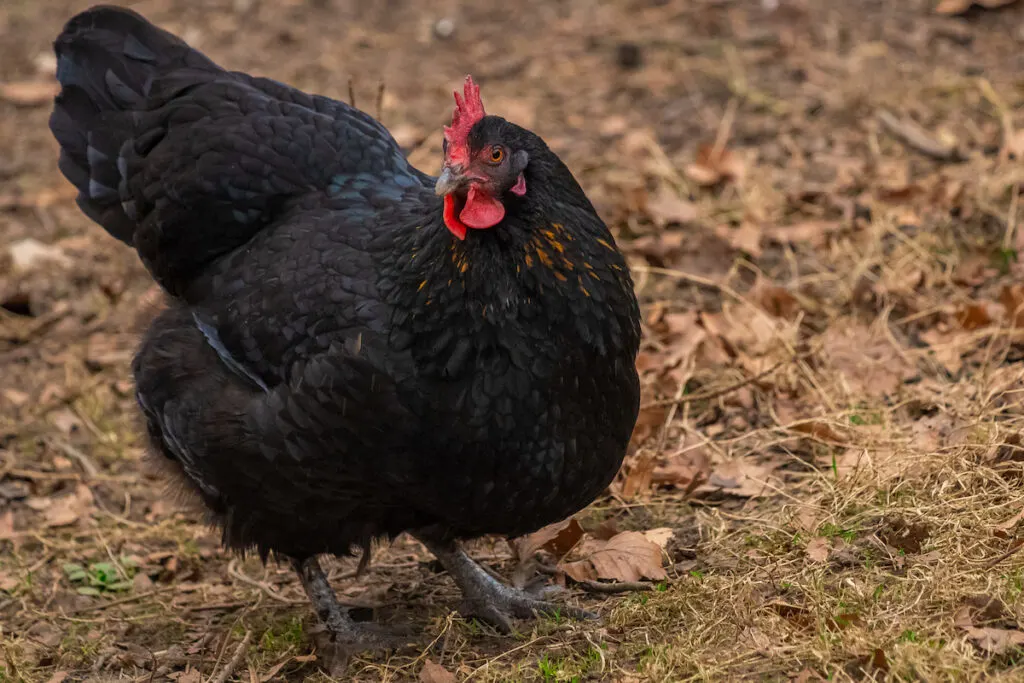
Table of Contents
1. The Australorp
The Australorp is a black chicken from Australia. It’s a mix of the Black Orpington and several other breeds.
These birds are fantastic layers and produce 250–300 medium brown eggs annually.
Australorps are slow to mature, but once grown, hens weigh up to 7 lb and roosters up to 10 lb.
Australorps have a docile temperament and are excellent all-rounders. They’re hardy birds and thrive in cold temperatures—they’re also reasonably heat tolerant.
Their black feathers, however, make this breed more prone to heat stroke, so you must provide them with plenty of shade and water in the height of summer.
2. The Buckeye
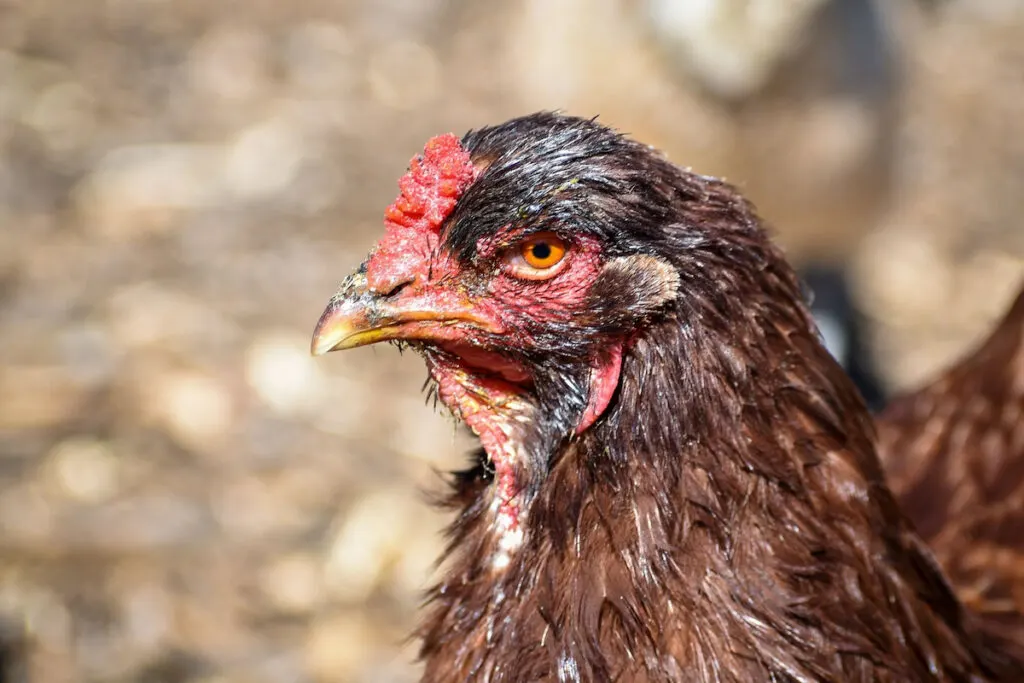
A woman named Nettie Metcalf developed the Buckeye in Ohio. Nettie was the first woman to produce a breed when she crossed a Plymouth Rock with a Buff Cochin.
Buckeyes are hardy birds with small combs that can tolerate cold and warm climates.
Buckeye hens lay between 150–200 medium to large brown eggs annually and weigh up to 6lb. Roosters weigh up to 7lb.
These birds are calm, friendly, and curious, but some roosters can be aggressive.
Buckeyes love to free-range, but they also tolerate confinement.
3. The Delaware
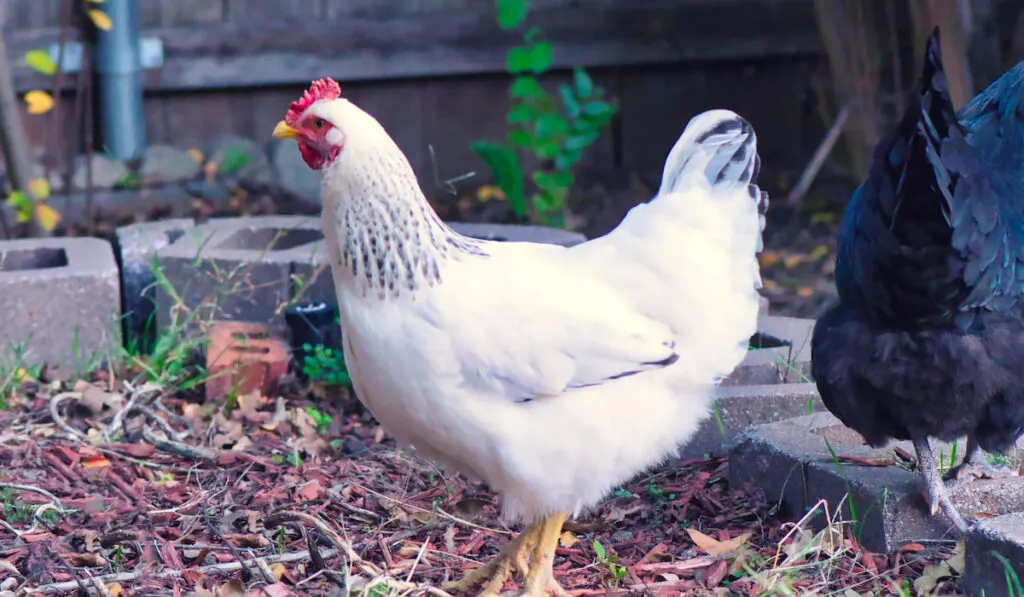
The Delaware is a cross between the Plymouth Rock and the New Hampshire, making it a hardy breed. However, it’s endangered.
The Delaware was originally a broiler but is now more popular as a layer.
These chickens are famous for their large brown eggs, producing about four each week and up to 200 per year.
Delawares are versatile laying hens ideal for Connecticut because they’re tremendously adaptable to the climate and environment.
They’re friendly and calm but can be noisy and aren’t very broody.
The Delaware develops quickly. Hens weigh up to 6.5lb; and roosters up to 8.5lb.
4. The Dominique
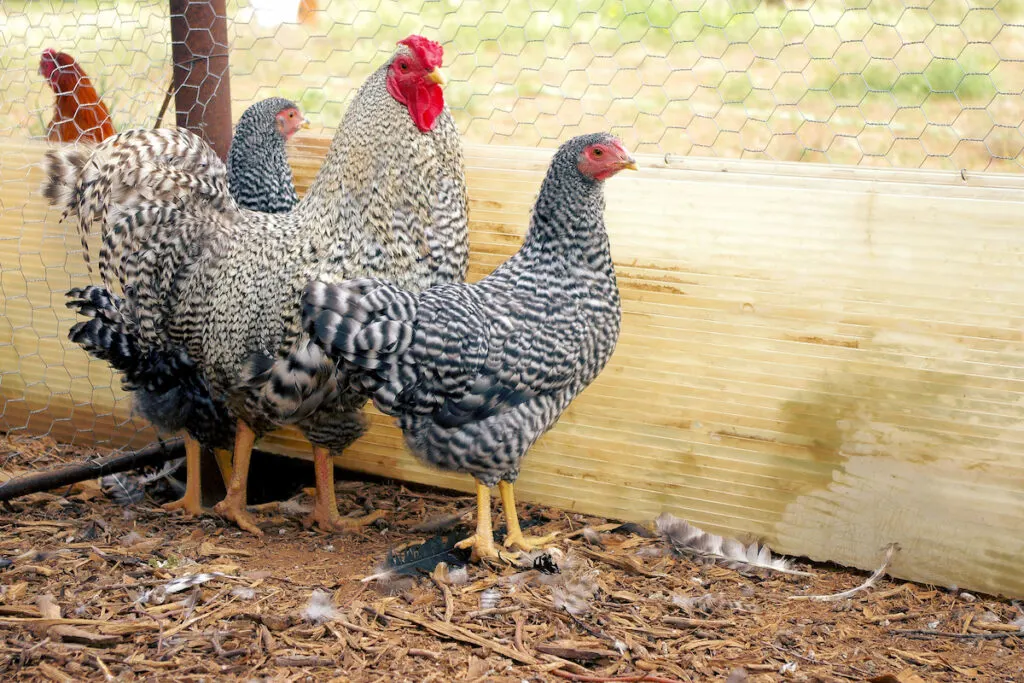
Dominiques are one of the oldest American breeds. They originated in colonial times and are also known as Pilgrim Fowl.
Dominiques are dual-purpose birds, but people usually keep them for laying—they produce 150-200 medium brown eggs annually.
This breed matures quickly. Hens weigh up to 5lb; and roosters up to 7lb when fully grown.
Dominiques have a pea or rose comb, which is less susceptible to frostbite, making them ideal for cold climates. They are also pretty heat tolerant.
Dominiques are robust, calm, cooperative, and excellent brooders. They like to free-range and are fantastic foragers.
5. Easter Eggers
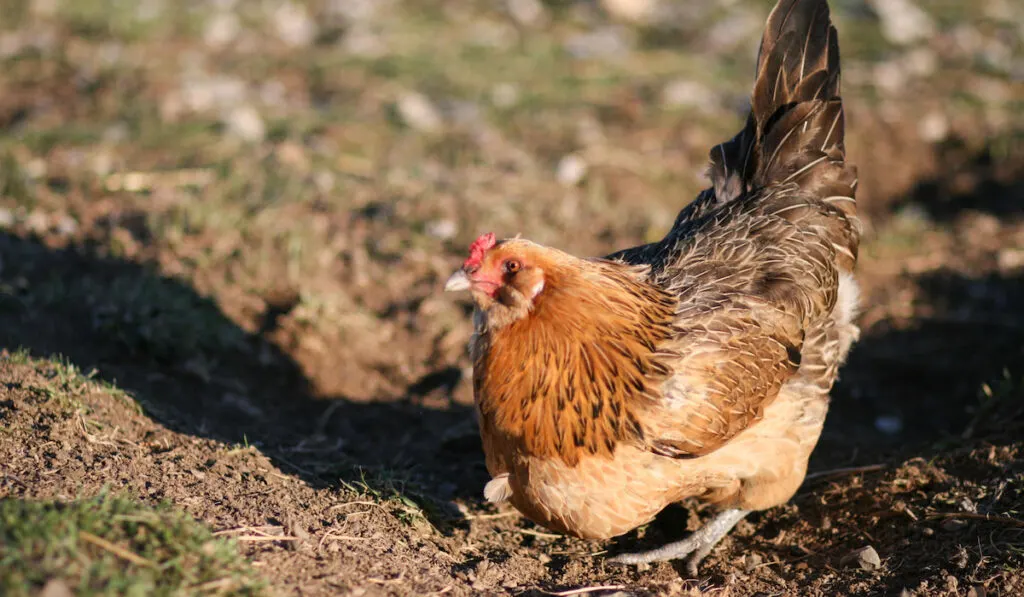
Easter Egger chickens aren’t an official breed—they are a mix of either the Araucana or Ameraucana.
Each bird is unique, with different colors, markings and combs, and they are incredibly friendly, curious, calm birds who enjoy human company.
Easter Eggers are fantastic laying hens for Connecticut because they’re heat and cold-tolerant.
The Easter Egger chicken is a small, dual-purpose bird primarily used for egg production. The hens weigh up to 4lb; and the roosters, up to 5 lb.
They are reliable layers and produce four extra large eggs per week—200 plus per year.
Their eggs are either blue, pink, cream, or brown colored.
Easter Eggers aren’t very broody and can be prone to bullying because they’re so passive.
6. The Plymouth Rock
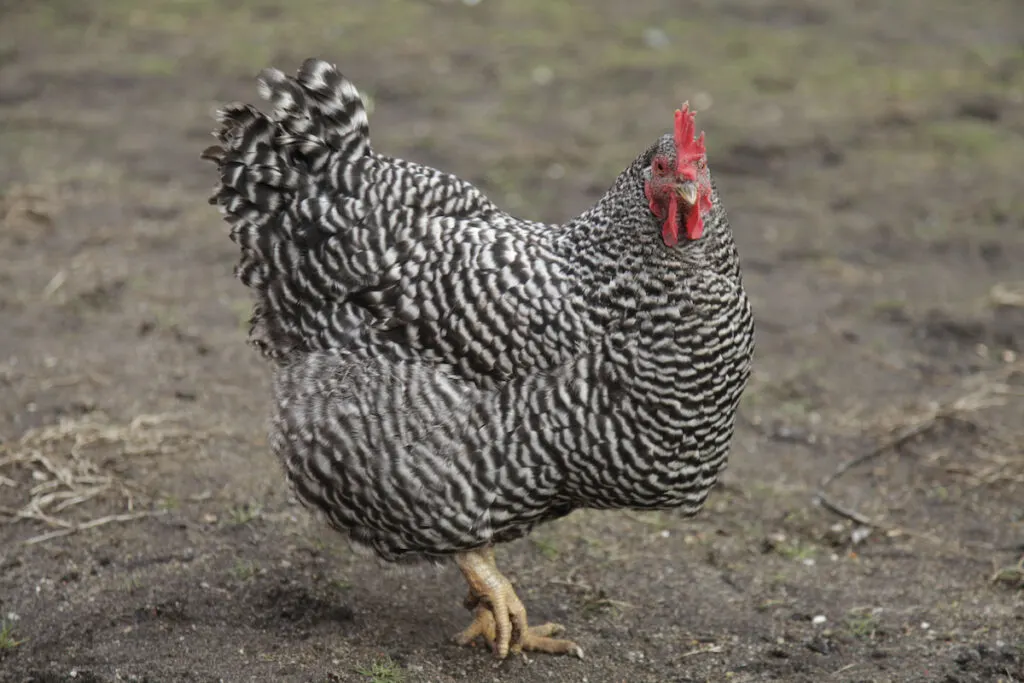
The Plymouth Rock was developed in New England in the 1800s. It comes from the Dominique chicken, and the breeds look similar. The main difference is Plymouth Rocks have a large single comb rather than a rose comb.
Plymouth Rock hens are reliable layers and produce up to 250 medium to large brown eggs annually.
Plymouth Rocks are distinctive dual-purpose birds and mature quickly. Hens weigh up to 7lb; and roosters, up to 8 lbs.
These birds are incredibly cold-tolerant and manage well in the heat if they can access shade and water. The Plymouth Rock is friendly and calm and loves to free-range.
7. The Rhode Island Red
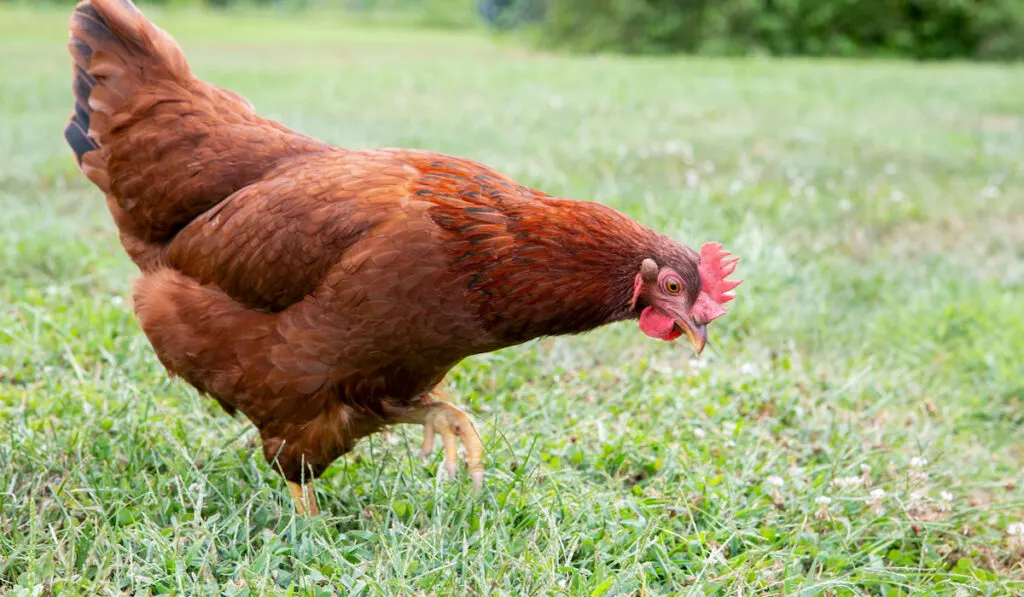
The Rhode Island Red is an American breed from Massachusetts and is an incredibly friendly, dual-purpose chicken.
They are prolific layers, producing 250–300 medium to large brown eggs annually and are low-maintenance birds, hardy in all climates.
Rhode Island Reds are medium-sized: the hens weigh 6.5lb; and the roosters 8.5lb. They’re generally friendly, but the roosters can be territorial and might bully timid flock mates.
Rhode Island Reds aren’t good around pets and children, and you shouldn’t keep them with other assertive breeds.
8. The Sussex
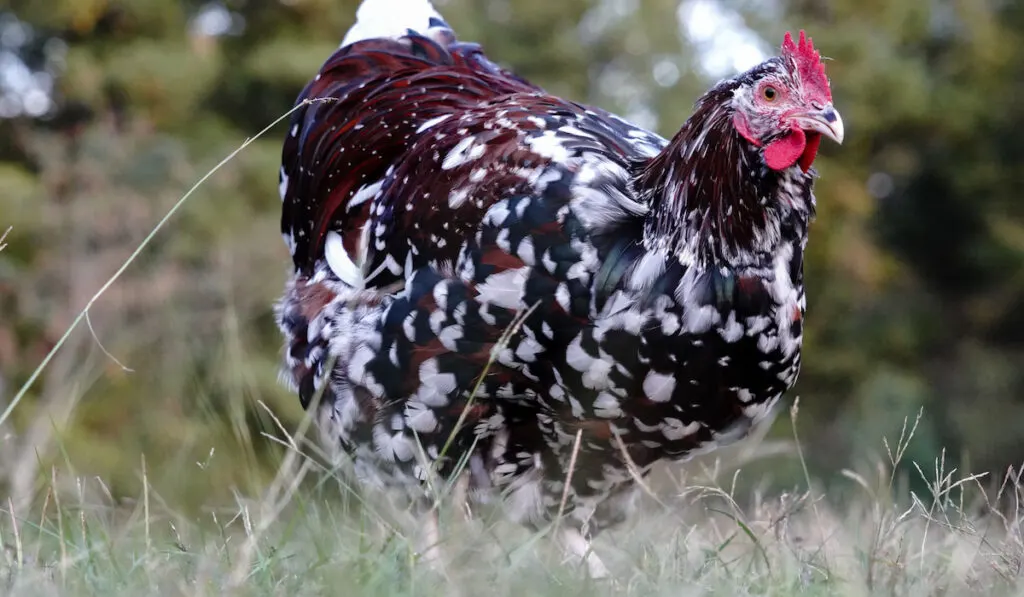
Sussex chickens come from England, boasting a rich history dating back to Roman times.
They can tolerate long, cold winters but aren’t good in extreme heat, so they need access to shade in the summer.
Sussex chickens are friendly and good-natured and make fantastic pets.
The Sussex is a hardy, low-maintenance, dual-purpose bird. Plus, they’re reasonably quiet and love foraging.
The hens are good brooders and layers, producing 200–250 large cream to light brown eggs annually. Sussex hens weigh up to 7lb; and roosters up to 9lb.
9. Wyandotte
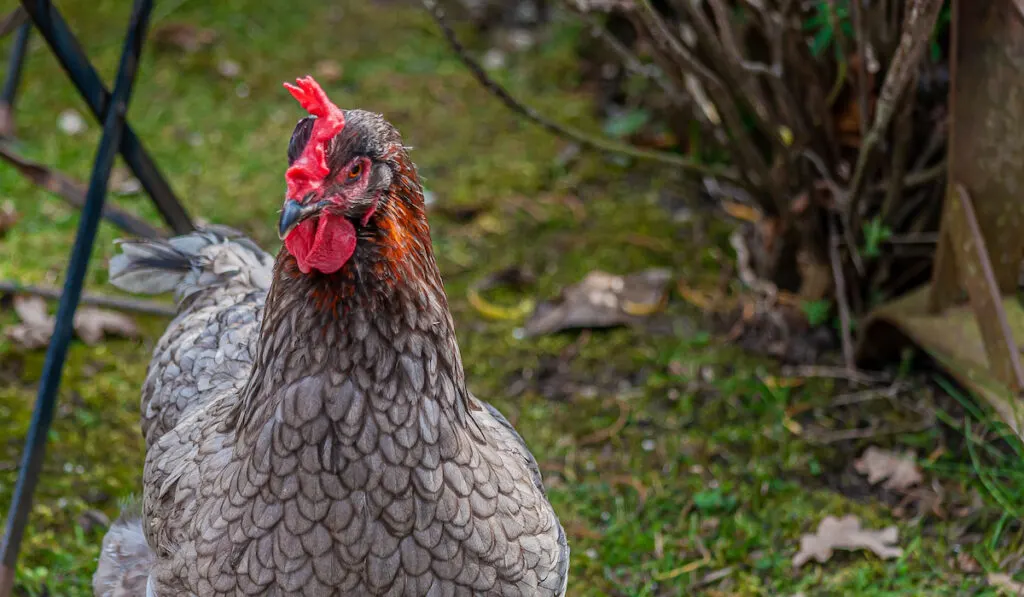
The Wyandotte is a hardy, dual-purpose American bird with striking colors and a small rose comb. These birds are incredibly cold-resistant.
Roosters weigh up to 8lb, while hens weigh up to 6lb and lay 150–200 cream to light brown, medium to large eggs annually.
Wyandottes are docile and calm but can be aloof with humans and generally don’t like to be petted and handled. They’re quiet and cope well living indoors, and the hens tend to be broody.
Wyandotte chickens are reasonably heat resistant if they have access to shade and plenty of cool water.
Summary
The best laying hens for Connecticut are cold-tolerant ones that can also bear the heat. Connecticut has long, harsh winters, so choose large, cold-resistant birds, ideally with short combs.
If chickens have long combs, you can apply Vaseline to prevent frostbite.
Connecticut summers are reasonably warm, so ensure birds can access shade and have plenty of water available in the warm months, especially on hot days.
Resources
- https://www.homesteadingwhereyouare.com/2021/01/05/best-cold-weather-chicken-breeds/
- https://morningchores.com/chicken-breed-for-your-climate/
- https://www.climatestotravel.com/climate/united-states/connecticut
- https://www.thehappychickencoop.com/7-chicken-breeds-that-do-well-in-cold-climates/
- https://breeds.okstate.edu/poultry/chickens/delware-chickens.html
- https://thegardeningdad.com/best-chicken-breeds-for-connecticut
- https://breeds.okstate.edu/poultry/chickens/dominiques-chickens.html
- https://backyardpoultry.iamcountryside.com/chickens-101/heat-tolerant-and-cold-hardy-chicken-breeds/
- https://blog.meyerhatchery.com/2020/03/breed-selections-by-usda-plant-hardiness-zones/
- https://www.chickensandmore.com/speckled-sussex/
- https://breeds.okstate.edu/poultry/chickens/plymouth-rock-chickens.html
- https://seasonsyear.com/USA/Connecticut
